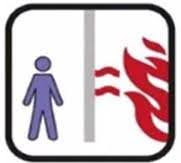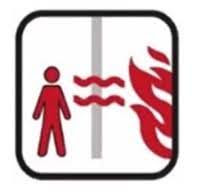Passive fire protection is a critical element of a building’s design. When properly implemented, it prevents the spread of fire throughout a building, a concept known as fire compartmentation. However, it’s important to note that this is only effective if the service penetration sealing is prioritised during the project’s design stage. This ensures that all firestopping requirements are considered, guaranteeing the correct products are installed in line with primary test evidence and manufacturers’ guidance.
Test evidence is the key here. Without it, there is no assurance that products will perform as intended in the event of a fire, thus risking both life and building safety. This is why fire testing is not just crucial, but a responsibility that manufacturers and stakeholders must prioritise to ensure the use of tested firestopping solutions.
Service penetrations are tested to the BS EN 1366-3 fire-resistance test standard. This measures the effectiveness of products in sealing openings created by services through fire-rated floors and walls.
Fire testing is a challenging feat. It involves ample preparation, time, and resources. Once the specimen is ready to test, it is not as simple as exposing it to fire. Many factors work to determine the success of the test, including the concepts of insulation and integrity.
These terms are frequently used in the construction industry, so understanding their roles is essential.
Insulation (I) measures a component’s time to resist a fire’s heat passing through to the non-fire side. This is to maintain the building’s compartmentation. The standard requires that the maximum temperature rise should not exceed 180°C above ambient. Insulation failure occurs at the same time integrity fails, as detailed in BS EN 1363-1:2020.

Furthermore, integrity (E) refers to the component’s ability to withstand fire and, like insulation, works to maintain the compartmentation. This is assessed using the ‘cotton pad’ test, which ensures that products retain their separating function without allowing a gap gauge, causing ignition of the cotton pad when applied as per BS EN 1363-1:2020, or resulting in sustained flaming on the unexposed surface.

Insulation and integrity are key indicators of an application’s performance in a fire scenario. When selecting the appropriate tested detail for a specific application, it’s important to consider the EI rating to ensure effective compartmentation. For instance, if your project requires an EI 120 rating, you should not select a tested detail with a rating below this.
If you have any further questions, please don’t hesitate to contact us at technical@quelfire.co.uk.

